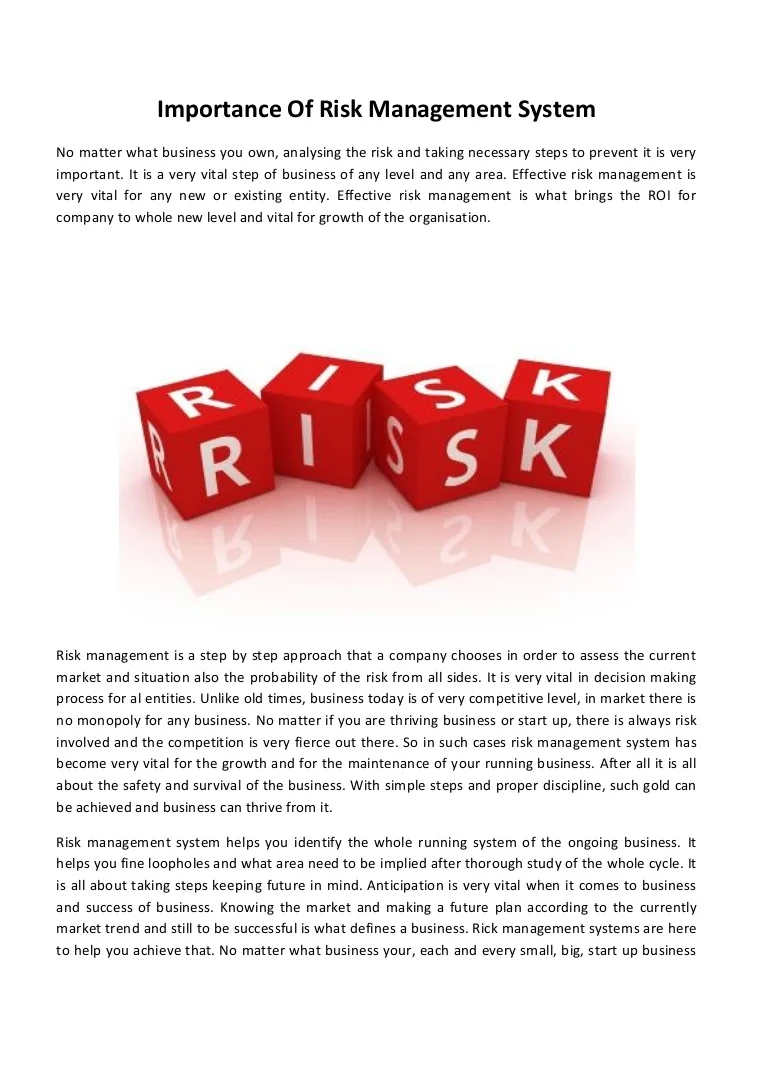The Importance Of Risk Management In Civil Engineering Projects

Risk management is an essential process that helps to identify, analyze, and respond to any potential threats or risks that a business or organization may encounter. By having a proper risk management system in place, companies can minimize their exposure to these risks and ensure that they are well-prepared to handle any unexpected events that may arise. In this post, we'll take a closer look at the importance of risk management and why it is crucial for your business to have a robust system in place.
Introduction
Every business is exposed to risks, whether they are financial, operational, or legal in nature. These risks can range from minor issues that can be easily resolved to major, catastrophic events that can threaten the very survival of the business. Therefore, it is essential to have a comprehensive and effective risk management system in place to help you identify, assess and mitigate risks.
The primary goal of risk management is to ensure that the organization is well-prepared to handle any unexpected events or circumstances that may arise. This includes everything from natural disasters and cyber-attacks to financial fraud and regulatory compliance issues.
Why Is Risk Management Important?
There are several reasons why risk management is essential for the success of any business, including:
- Identifying potential risks: The first step in effective risk management is identifying and analyzing potential risks that the business may be exposed to. By doing so, businesses can better understand what measures they need to put in place to mitigate these risks.
- Minimizing financial loss: When a business experiences a severe risk event, financial losses can be significant. By having a proper risk management system in place, companies can minimize their exposure to these risks and ensure that they are well-prepared to handle any unexpected events that may arise.
- Ensuring regulatory compliance: Many industries are heavily regulated, and businesses must comply with a wide range of regulations to avoid penalties, fines, and other legal consequences. A robust risk management system can help companies to stay on track with regulatory compliance requirements.
- Cultivating a culture of risk awareness: By prioritizing risk management, companies can start to foster a culture of risk awareness within their organization. This encourages employees to be more proactive about identifying and reporting potential threats, which can help to minimize the risk of future incidents.
Frequently Asked Questions
What are the key components of a risk management system?
There are several key components that should be included in a risk management system, including:
- Risk identification: Identifying all potential risks that could impact the organization.
- Risk assessment: Assessing the likelihood and potential impacts of each risk.
- Risk mitigation: Putting measures in place to minimize or eliminate risks where possible.
- Risk monitoring: Monitoring the effectiveness of risk management strategies and making adjustments as needed.
- Reporting: Regularly reporting on risk management activities and outcomes to stakeholders.
What are some strategies for mitigating risk?
There are several risk mitigation strategies that businesses can use, including:
- Diversification: Spreading investments or operations across multiple assets, industries, or geographic areas to reduce exposure to any single risk.
- Insurance: Purchasing insurance coverage to protect against financial losses in the event of a risk event.
- Contingency planning: Developing a contingency plan or backup strategy in the event of a risk event.
- Regular testing and training: Regularly testing risk management plans and providing training to employees on how to identify and mitigate risks.
What are some common risk types?
There are several common risk types that businesses may encounter, including:
- Financial risks: These can include market risks, credit risks, liquidity risks, and operational risks that could result in financial losses.
- Operational risks: These risks arise from internal processes, systems, or people and could include regulatory compliance issues, human error, or system failures.
- Reputational risks: These risks arise from negative publicity or poor public opinion and can cause significant damage to a company's reputation or brand.
- Strategic risks: These risks arise from changes in the business environment or competition and could include new market entrants, changes in legislation, or shifts in consumer behavior.
Conclusion
Having a robust and effective risk management system in place is crucial for the success and survival of any business. By identifying potential risks, implementing strategies to mitigate them, and fostering a culture of risk awareness, companies can be better prepared to handle unexpected events when they arise.
Remember, risk management is not a one-time process but an ongoing, iterative process that requires regular review and adjustment. By prioritizing risk management and making it a core component of your business strategy, you can ensure that your organization is well-prepared to handle anything that comes its way.


Post a Comment for "The Importance Of Risk Management In Civil Engineering Projects"